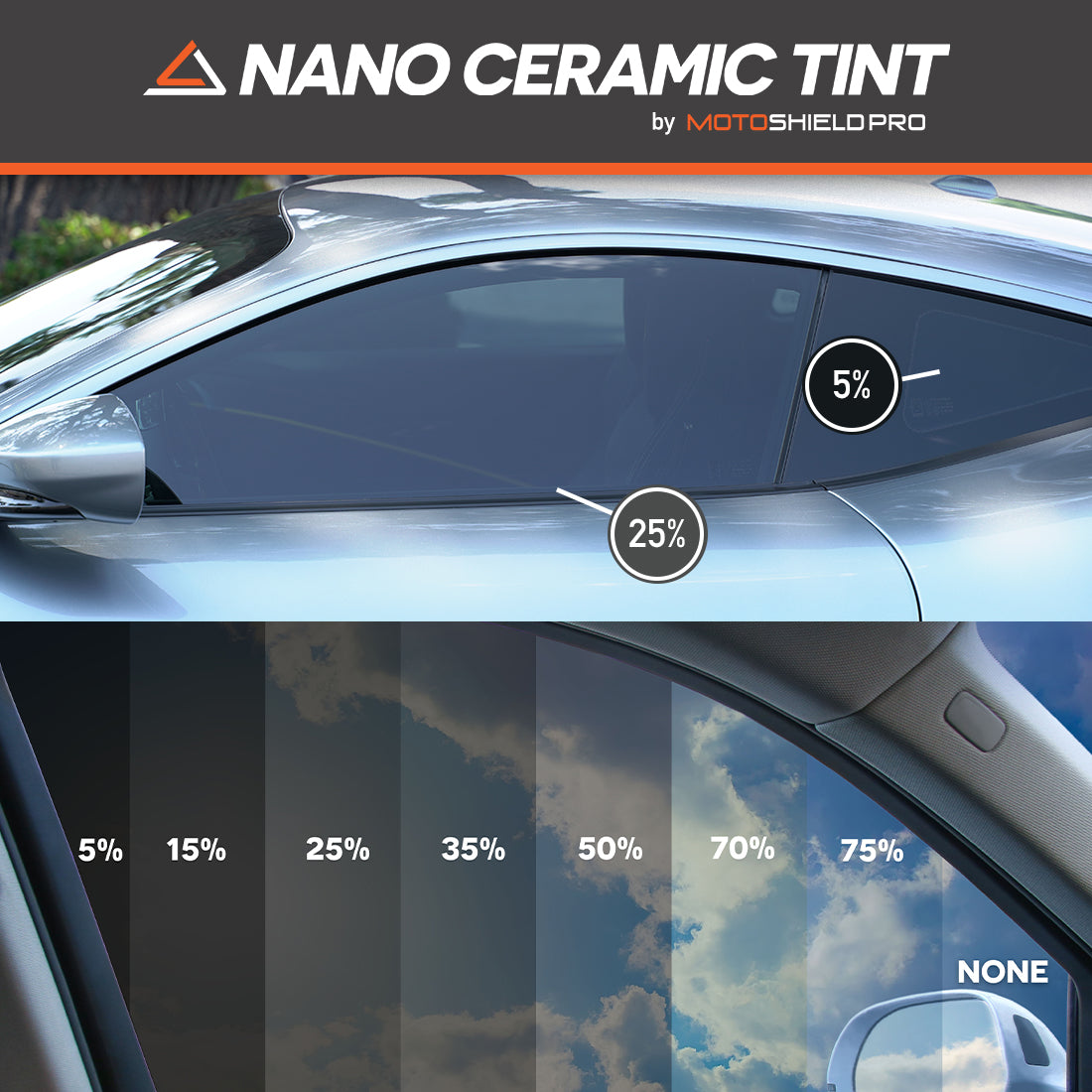How Car Window Tinting Can Enhance the Resale Value of Your Automobile
How Car Window Tinting Can Enhance the Resale Value of Your Automobile
Blog Article
Home Window Tinting Laws and Standards: What You Need to Know Before Tinting Your Car
Before proceeding with window tinting for your car, it is necessary to acquaint yourself with the diverse regulations and guidelines that regulate this method across different states. These regulations determine the acceptable degrees of tint darkness, commonly measured by visible light transmission (VLT) portions, and consist of specific specifications for front windshields intended at making certain road security.
Overview of Home Window Tinting Laws
Window tinting regulations are often based on variation throughout various territories, reflecting neighborhood guidelines and safety factors to consider. These legislations dictate the acceptable degrees of color darkness and reflectiveness on car windows, making sure that vehicle drivers maintain appropriate presence while likewise securing against dangerous UV rays and warm.
Most policies categorize home window tinting based upon the Visible Light Transmission (VLT) percentage, which indicates the amount of light that can go through the home window. Generally, reduced VLT percents signify darker tints. Regulations frequently differentiate in between the front, side, and back home windows, with stricter restrictions related to the front windshield to improve safety and security for both the chauffeur and various other roadway users.
Furthermore, some territories enforce restrictions on the reflectivity of the tint, protecting against excessive glow that could hinder visibility. Exemptions to these regulations may exist for people with particular clinical conditions needing added sun defense. Conformity with window tinting policies is crucial, as offenses can cause penalties, obligatory elimination of the color, and potential increases in insurance costs. As a result, it is essential for vehicle owners to familiarize themselves with neighborhood regulations before proceeding with window tinting installments.
State-by-State Tint Regulations
Recognizing the certain home window tinting laws in each state is important for car proprietors seeking to abide by the regulation. Each state in the united state has developed its very own set of regulations governing window tinting, which can vary considerably. These guidelines frequently dictate the permitted degrees of tint darkness, the sorts of windows that can be tinted, and any type of clinical exemptions that might apply.
As an example, states like The golden state have rigid limitations on tint darkness for front windows, while others, such as New Mexico, might permit darker tints. Furthermore, particular states mandate details visibility portions for numerous windows, including the windshield, front side home windows, and back windows. It is essential for auto owners to acquaint themselves with their state's regulations to avoid possible fines or charges.
In addition, some states may need an accreditation sticker label to be positioned on tinted home windows, suggesting compliance with state legislations. Failing to abide by these guidelines not just risks lawful consequences yet can also impact safety and exposure while driving. Lorry proprietors need to conduct extensive research or get in touch with regional authorities to make certain complete understanding and conformity with state-by-state color policies.
Allowed Tint Degrees and Kinds
Numerous lorry proprietors might be shocked to discover that allowed tint levels and types vary commonly throughout different states. Each state has actually developed its very own regulations relating to the permissible darkness and reflectivity of home window color, often gauged by Visible Light Transmission (VLT) percentages. VLT refers to the quantity of light that can travel through the tinted home windows; hence, a lower percent shows a darker tint.

Additionally, the kinds of color materials allowed can vary, with some states prohibiting metal or mirror-like coatings. It is crucial for vehicle proprietors to familiarize themselves with their state's details laws to ensure conformity. Non-compliance can cause penalties, obligatory removal of the color, or other legal consequences, making it important to comprehend these laws prior to waging installment.
Medical Exceptions for Tinting
While not all states offer allowances for medical exceptions regarding home window tinting, those that do identify the need for certain people to enhance visibility and comfort as a result of medical problems. Various medical conditions, such as lupus, skin cancer, and particular eye conditions, can provide people specifically sensitive to sunlight. Subsequently, these people might need darker colors to protect themselves from dangerous UV rays and glow.

It is necessary to keep in mind that despite a medical exception, there might still be constraints on the level of color allowed. Compliance with state legislations ensures that individuals are both protected and within legal limits. Those considering clinical exemptions need to contact their neighborhood Division of Electric motor Vehicles or comparable authority to understand the requirements and procedures required to make an application for an exemption effectively.
Fines for Non-Compliance
Stopping working to follow home window tinting legislations can result in significant fines, which differ by state. Law enforcement firms are encouraged to issue citations for automobiles that do not stick to the defined tinting laws. These fines you could look here typically include penalties, which can range from small quantities to several hundred dollars, depending upon the extent of the offense and the state concerned.
In some territories, duplicated offenses might lead to rising fines or extra charges, such as obligatory court appearances. In addition, non-compliance might require the elimination of illegal tinting, frequently at the owner's cost. In extreme cases, regular culprits may face suspension of their automobile enrollment till conformity is accomplished.
In addition, insurance coverage ramifications might develop from receiving numerous citations for home window tint infractions. Insurers may check out such infractions as a sign of riskier habits, possibly bring about increased premiums or trouble in insurance coverage.
To avoid these charges, it is vital for vehicle owners to familiarize themselves with their neighborhood home window tinting regulations and guarantee that their car complies (Window Tinting). This aggressive approach not just prevents lawful ramifications yet additionally advertises roadway security
Verdict

Many regulations categorize window tinting based on the Visible Light Transmission (VLT) portion, which shows the amount of light that can pass via the window. Conformity with home window tinting regulations is important, as infractions can result in penalties, compulsory removal of the color, and possible rises in insurance costs.Understanding the specific home window tinting regulations in each state is essential for lorry proprietors looking for to comply with the regulation. These policies often determine the allowed levels of color darkness, the kinds of windows that can be tinted, and any kind of clinical exemptions that might use.
For instance, states like The golden state have rigorous restrictions on color darkness for front home windows, while others, such as New Mexico, may enable darker colors.
Report this page